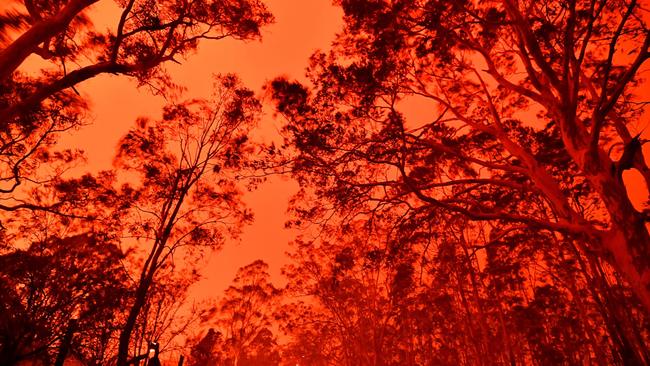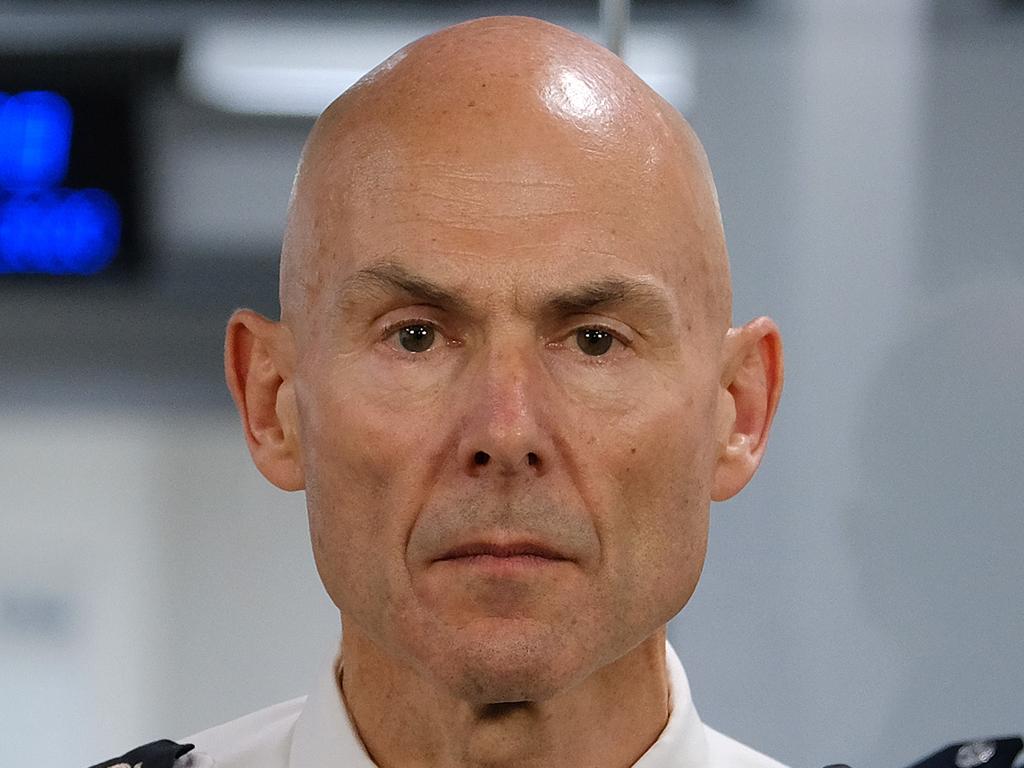Forestry industry, CFMEU united on logging, burns to take fight to bushfires
The forest industry and CFMEU want fuel loads in national parks to be managed through backburning and selective logging.

The forest industry and the powerful CFMEU have called for fuel loads in national parks to be aggressively managed through hazard reduction burning and selective logging, to avoid a repeat of the bushfire crisis sweeping the nation.
The Australian can also reveal the NSW government will consider stripping land management and hazard reduction responsibilities from “conservationist” environmental agencies.
Instead it would create a standalone hazard reduction body that would be solely devoted to reducing fuel loads and clearing more land to mitigate fire risks.
The proposal is one of two options being pushed strongly by Nationals MPs ahead of an inquiry into bushfire management led by the NSW Department of Planning, Industry and Environment.
“This will eventually go through cabinet submissions,” a senior Coalition MP told The Australian.
A second, “softer” option to overhaul land management, likely to be viewed more favourably by cabinet, involves significantly increasing the Rural Fire Service’s powers over its allied agencies.
Under this plan, the NSW RFS would be made the lead decision-making body on forest clearing and hazard reductions. Its priority would be to significantly reduce fuel loads and clear land on both public and private property.
Calls for more stringent management of forests came as Scott Morrison received a call from US President Donald Trump on Tuesday, offering the condolences of the American people, and a message of support from British Prime Minister Boris Johnson. The crisis has claimed 24 lives.
The Australian Forest Products Association is urging a new approach to managing the nation’s 132 million hectares of native forest that ignores the “arbitrary divide” between public forests, plantations and national parks.
Writing in The Australian, association chief executive Ross Hampton says locking up forests over the past 20 years has put communities and the environment at risk. “New ‘protected areas’ are exactly the opposite of protected,” he says. “It means the removal of the men and women and machinery which in the past were on the spot to put out fires when they are still small.
“This national disaster should be a wake-up call that business as usual cannot continue. The arbitrary divide between how we manage our multiple-use public forests, privately owned forests, and national parks cannot continue.”
The Construction Forestry Maritime Mining and Energy Union’s forestry division also declared on Tuesday that locking up native forests “has an impact on our ability to deal with fires”.
The Victorian government announced in November it would stop all native forest harvesting by 2030, immediately declaring about 90,000ha of old-growth forests off limits to loggers.
CFMEU national secretary Michael O’Connor said the decision would elevate the risk of future catastrophic fires.
“The timber industry increases our capacity to deal with fire, and our capacity to mitigate against bushfires, because of the capacity and the well-trained people it provides,” Mr O’Connor said.
“And no government has ever, when they’ve reduced the size of the timber industry, been willing to provide enough funding to ensure that that capacity is replaced.”
Former Victorian emergency management commissioner Craig Lapsley has also backed selective logging as a crucial fire-management tool.
The 2009 Black Saturday royal commission recommended that 5 per cent of the state’s public land be burned each year to reduce fuel loads — a target that authorities struggled to meet.
Mr Lapsley, who was appointed to the post following the royal commission, said selective logging was a crucial fire-management tool. “The silver bullet has to be more than just burning alone,” Mr Lapsley told The Australian. “Thinning forests is a very divisive term and gets the environmentalists going nuts. But if you want to reduce the intensity of fires, you have to reduce the fuel. Thinning has to be a consideration.”
He said fuel reduction should be done in consultation with the local community and with respect for environmental values.
The Prime Minister will travel to South Australia on Wednesday to meet bushfire victims in the state where the Kangaroo Island blaze has claimed two lives and more than 155,000ha of forest.
On Tuesday, he attended the Sydney funeral of firefighter Andrew O’Dwyer, who died when his truck rolled on December 19; before flying to Albury to meet the family of another firefighter, Sam McPaul, who died when his truck flipped in a “fire tornado” on December 30.
As claims soared to about $700m, insurers were told by the federal government to prioritise local tradespeople for rebuilds.
Firefighters used cooler conditions on Tuesday to reinforce containment lines. But NSW Rural Fire Service Commissioner Shane Fitzsimmons warned that fires burning along the border of Victoria and NSW could merge into a “mega-blaze” as the weather heats up towards the end of the week.
The Corryong fire in Victoria could merge with fires burning near the Kosciuszko National Park as temperatures reach a forecast 40C in NSW and high 30s in Victoria by Friday, he said.
The NSW proposal on forest management is still in its formative stages and will add to existing tensions between senior Liberal Party and Nationals members over environmental management.
A senior Coalition MP last night dismissed the plans to grant overriding powers to the RFS, saying the volunteer firefighters might understand infernos but bushland and regeneration were completely different specialities.
The office of the Environment Minister said it had not been made aware of the proposal. “Understanding how to manage our bushland is totally different — you can’t just light it up,” the MP said, but added that the government must “absolutely change our practices” on bushfire mitigation.
Australian National University landscape ecologist David Lindenmayer said selective logging of wet forests had been shown to elevate fire risk for up to 40 years.
“When we thin the forest, we open the canopy,’’ Professor Lindenmayer said. “By taking out every third tree, more light penetrates to the forest floor and it dries it out. The slash (litter) that is left on the forest floor also dries out the forest. He said forestry workers should be re-employed as firefighters to use their “amazing skills” with heavy machinery.
Greens forests spokeswoman Janet Rice also cited scientific studies showing forest regrowth was drier and more flammable than older forest. Senator Rice said the Greens were not opposed to hazard reduction burning as long as it was “guided by the expertise of parks managers, scientists, firefighters and First Nations people”.







To join the conversation, please log in. Don't have an account? Register
Join the conversation, you are commenting as Logout